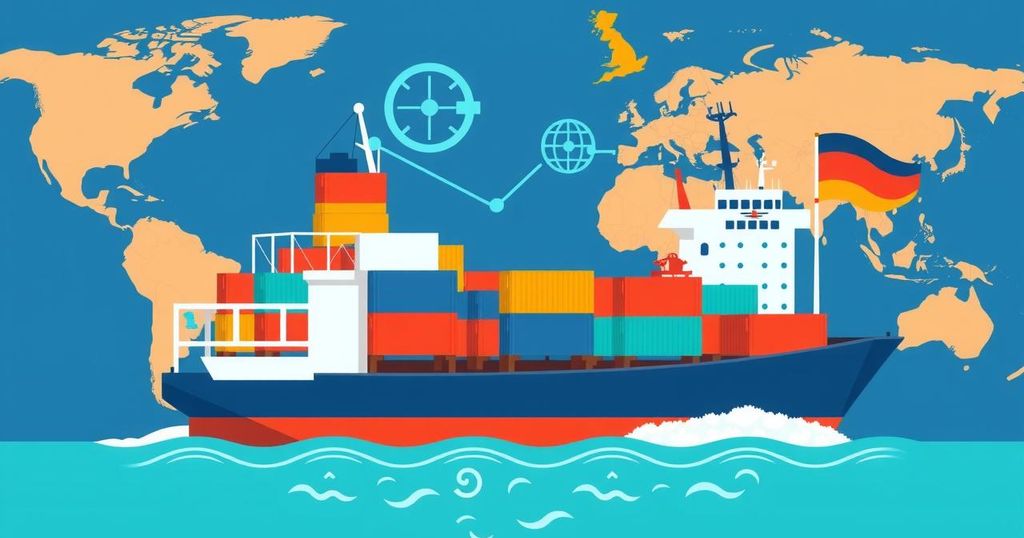Economy
Politics
ASIA, BANGLADESH, BSS, CAMBODIA, CHINA, DHAKA, DONALD TRUMP, ECONOMY, EXPORTS, FOREIGN INVESTMENT, INDIA, INDONESIA, LAOS, MEXICO, MYANMAR, NORTH AMERICA, PAKISTAN, PEW, PEW RESEARCH, SRI LANKA, SUPPLY CHAIN, THAILAND, TRADE, TRUMP, U. S, US, VIETNAM, WORLD BANK DHAKA, ZA, ZAHID, ZAHID HUSSAIN
Sophia Klein
Strategic Reforms Required for Bangladesh Amid U.S. Tariff Changes
Dr. Zahid Hussain argues that Bangladesh should utilize goodwill from reform commitments to reduce combined tariff rates, especially in light of recent U.S. reciprocal tariffs. He emphasizes the importance of damage control, collective seller agreements, and exploring duty exemptions. Despite the challenges, maintaining competitiveness against similarly affected countries remains crucial as Bangladesh navigates these trade dynamics.
Renowned economist Dr. Zahid Hussain emphasized that Bangladesh should capitalize on the goodwill stemming from its reform commitments to finalize policies aimed at reducing combined tariff rates. Such reforms are crucial for establishing more favorable trade relationships, especially in light of recent U.S. tariff changes under President Donald Trump, who has imposed significant reciprocal tariffs, reversing decades of tariff liberalization since the Great Depression.
Dr. Hussain highlighted the dramatic increase in the average U.S. tariff rate, which surged from 2.5% to 20% due to a single executive order, signaling a potential global tariff conflict reminiscent of the Smoot-Hawley Tariff. This earlier tariff, while intended to protect American markets, inadvertently intensified the Great Depression through retaliatory measures that sharply curtailed international trade.
The economist pointed out that U.S. reciprocal tariffs now align American tariff rates with those imposed on its exports. Consequently, Bangladesh, facing a combined tariff, para-tariff, and the tariff equivalents of non-tariff barriers estimated at 74%, needs to navigate these challenges carefully. While President Trump has proposed a “kind reciprocal tariff discount” of 50% for all countries, including Bangladesh, the tariff burden remains considerable.
Despite the challenges posed by high U.S. tariffs on textiles and apparel, Dr. Hussain noted that Bangladesh’s competitive position relative to other countries like Vietnam and India remains steady, given these nations face similarly high tariffs. However, the scenario poses risks of a broader contraction in global demand triggered by the U.S. tariff strategy, raising uncertainties about future trade dynamics.
Dr. Hussain urged for immediate damage control strategies as the reciprocal tariffs have already come into effect, complicating matters for goods in transit to the U.S. He suggested that Bangladesh should focus on shifting the tariff burden onto buyers, as many competitors are similarly positioned, although intense competition may challenge this strategy.
To mitigate the impact, it is imperative for sellers to reach a consensus against price reductions to accommodate tariffs, with relevant associations ensuring price stability and compliance. Additionally, exploring potential duty exemptions for exports based on their classification as essential low-cost products can provide further relief.
Looking forward, Bangladesh needs to address the substantial tariff rates, with Dr. Hussain questioning the legitimacy of the USTR’s tariff calculations based on bilateral trade deficits. The calculation method used seems arbitrary, particularly when considering the high average tariffs and non-tariff barriers currently imposed.
The USTR’s report on foreign trade barriers outlines necessary reforms that the interim government of Bangladesh acknowledges, including formalized repayment agreements with U.S. companies and streamlining bureaucratic processes. President Trump’s rationale for these tariffs centers on protective measures for U.S. industries and addressing perceived trade inequities.
Currently, Bangladesh faces a reciprocal tariff rate of 37%, with U.S. imports in 2023 incurring an average tariff of 15.7%. Such tariffs are pivotal within Bangladesh’s trade policy framework, underscoring the need for continual adaptation in response to evolving global trade legislation.
In summary, while there are significant challenges due to increased tariffs and potential global demand reductions, Bangladesh must strategically leverage reform goodwill, engage in proactive negotiations, and focus on optimizing trade relations to mitigate these impacts.
In conclusion, Bangladesh faces critical challenges in the wake of heightened U.S. tariffs and must strategically navigate this complex trade landscape. Dr. Zahid Hussain’s insights underline the importance of leveraging reform goodwill to reduce tariff burdens. By fostering collective agreements among sellers and exploring duty exemption opportunities, Bangladesh can work towards maintaining its competitive edge. Moreover, a close examination of U.S. tariff calculations might illuminate possible pathways for negotiation and trade improvement, as Bangladesh adapts to ongoing changes in global trade policy.
Original Source: www.bssnews.net








Post Comment